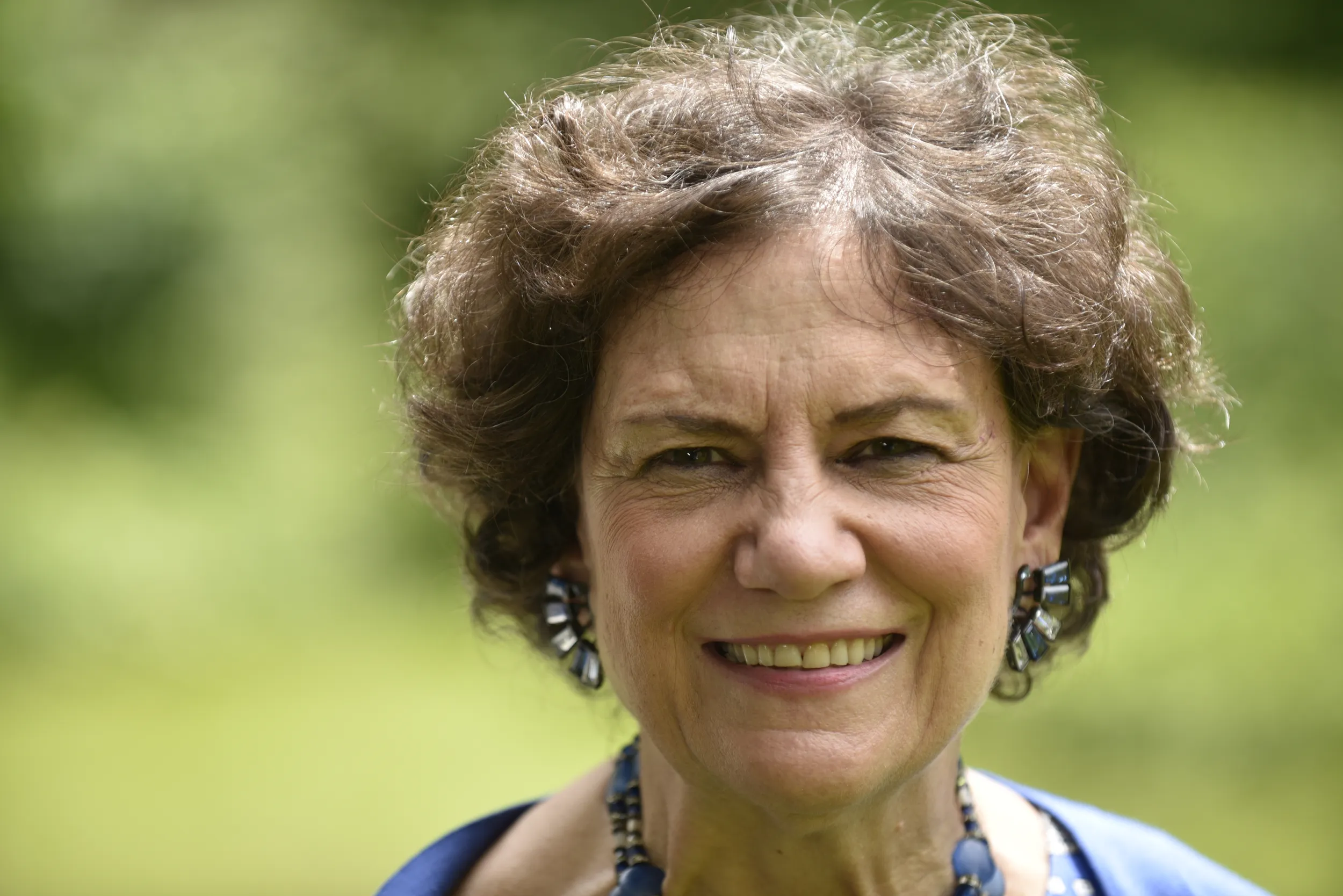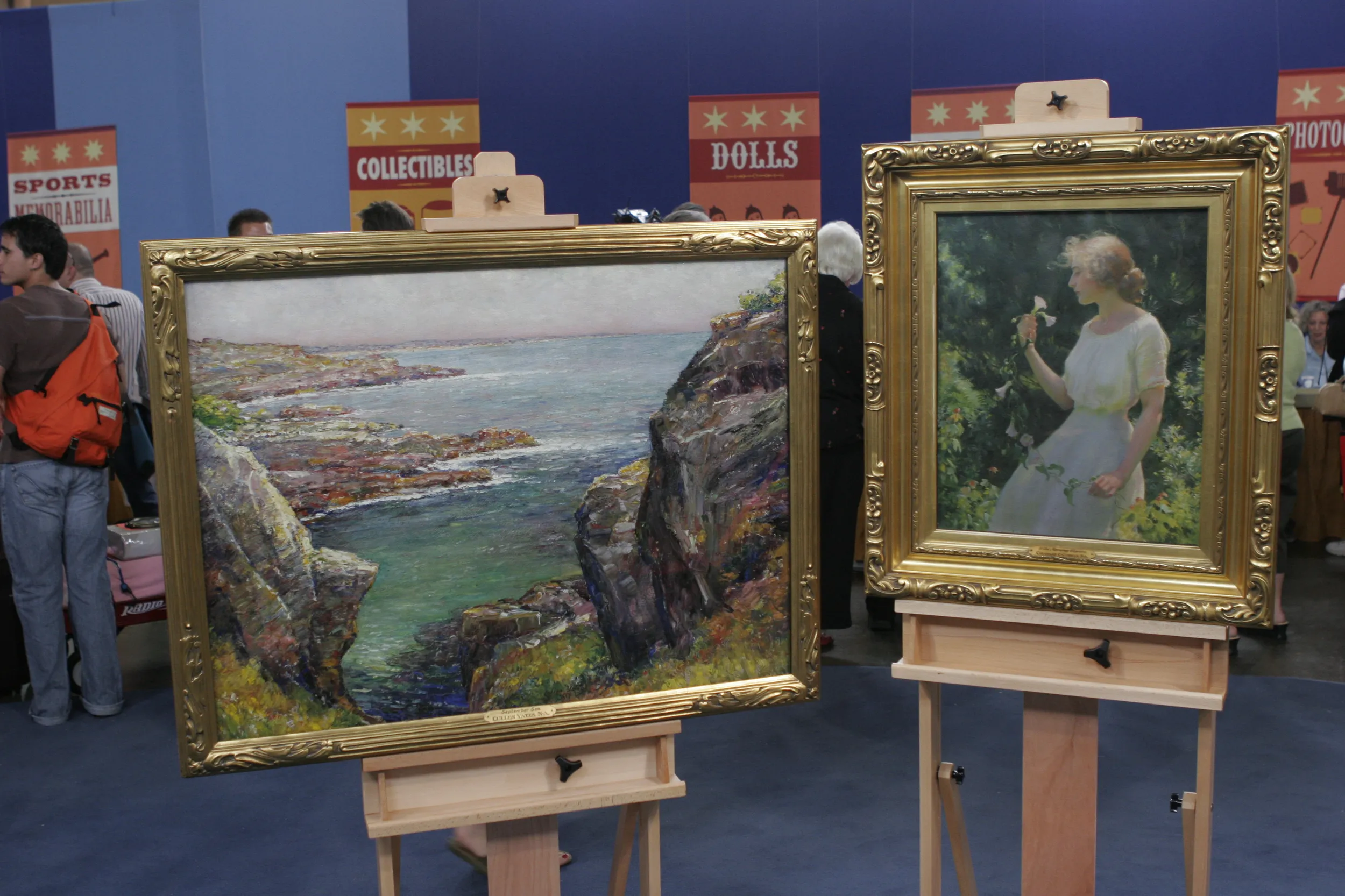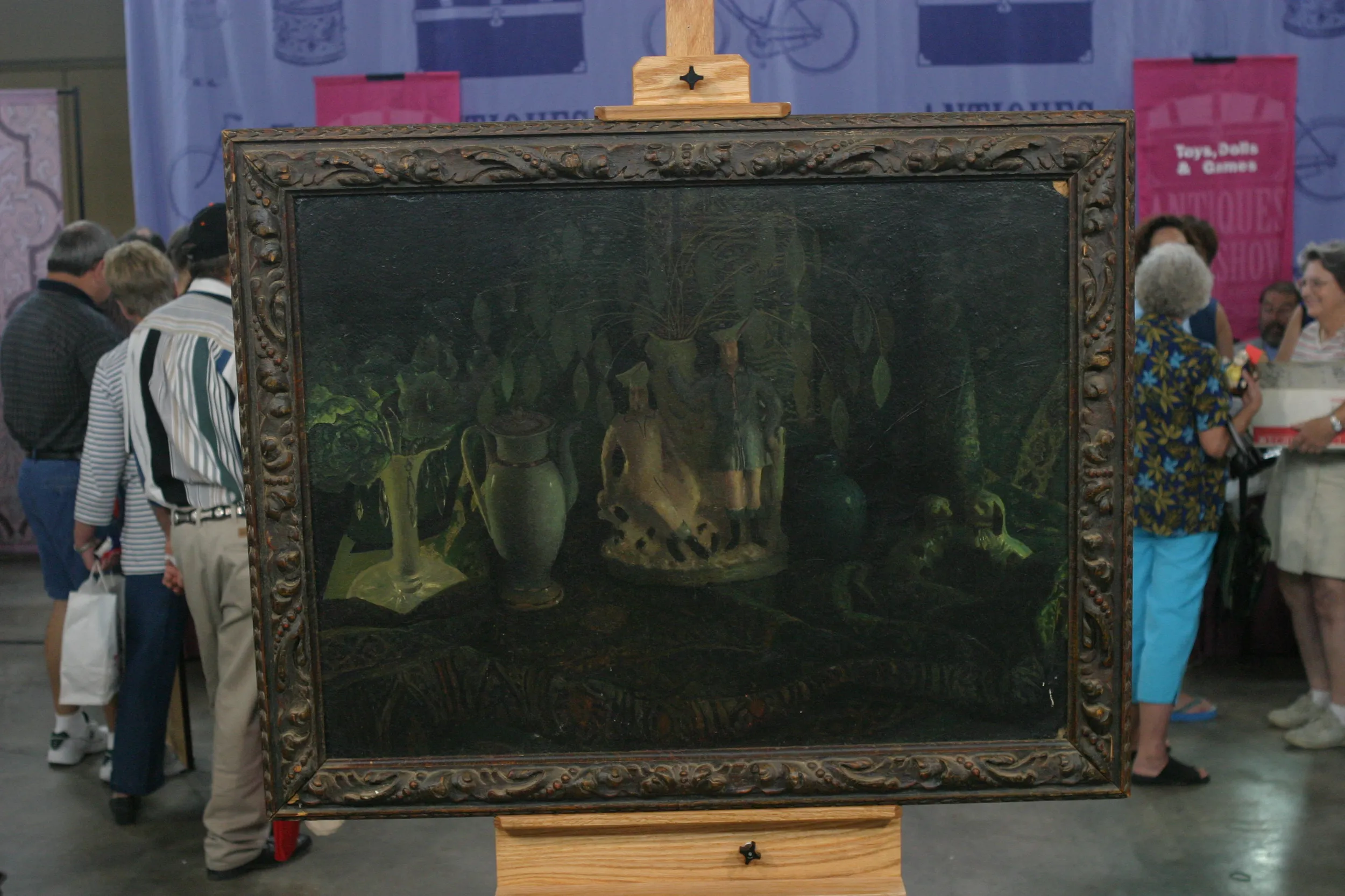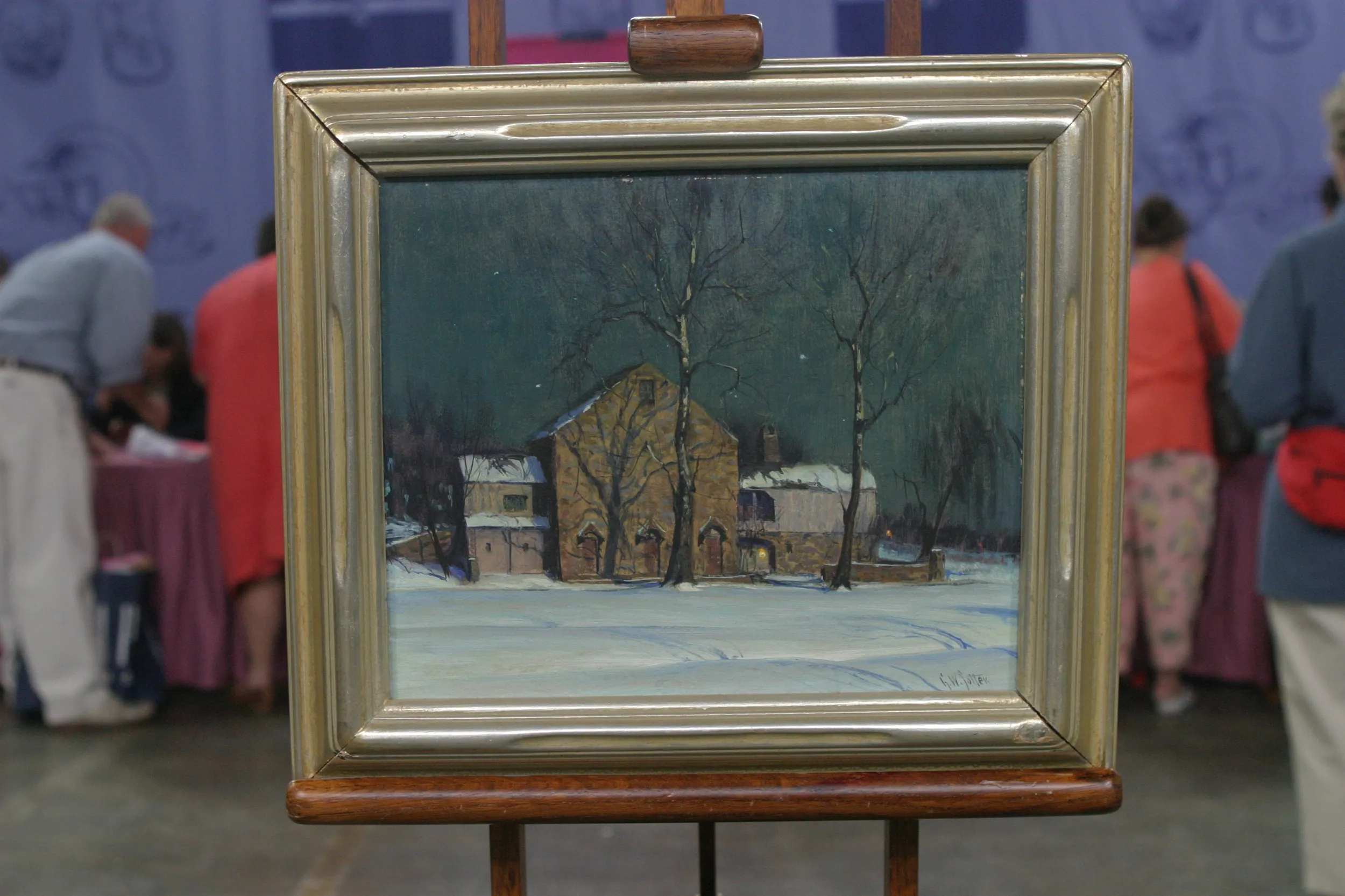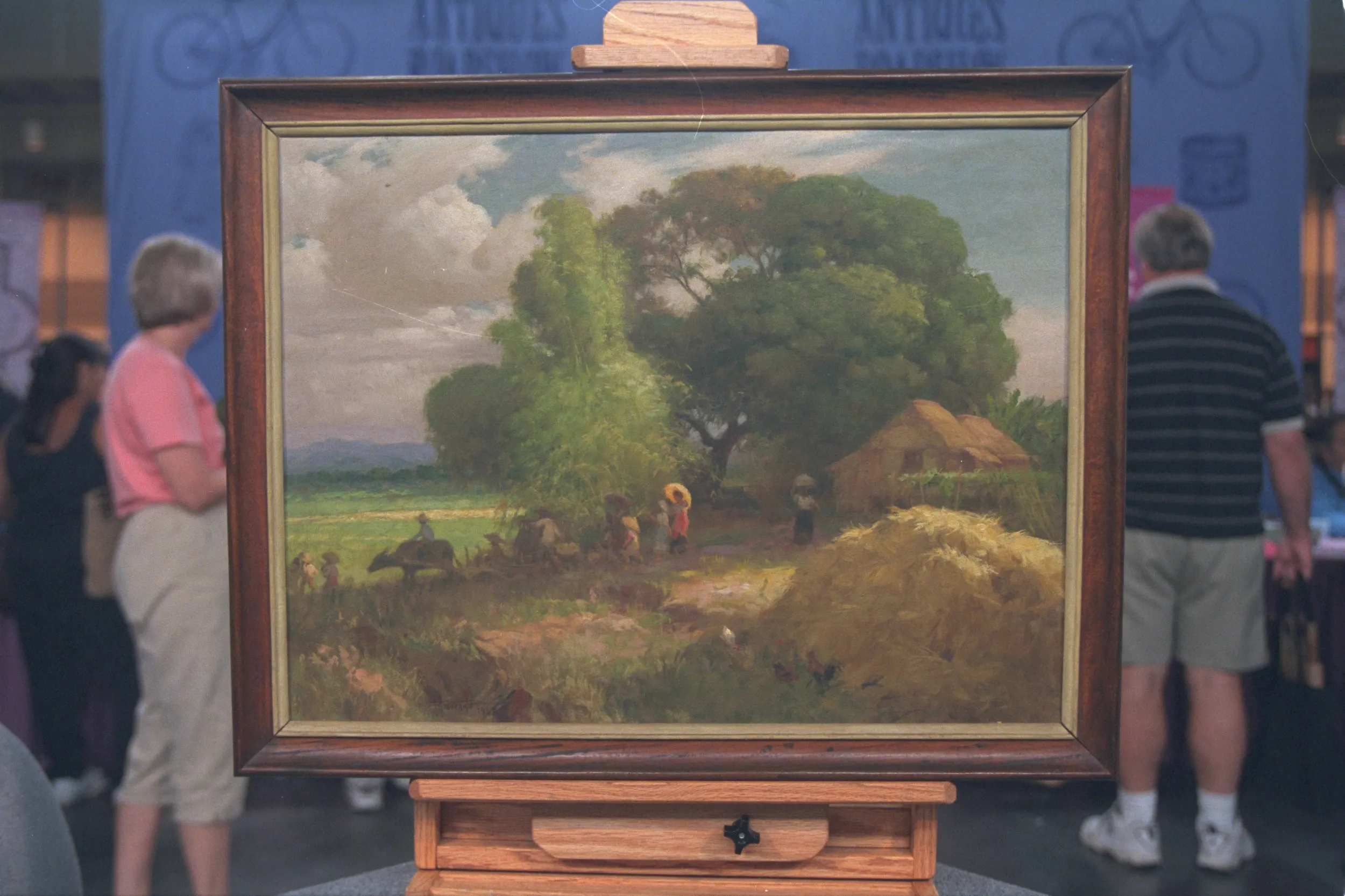GUEST: My mother bought these about 1967 from, uh, Forrest Moses in Eagle Bridge, New York. And she went up and actually took a picture of him, and they've just been in my family since.
APPRAISER: And how did she know of his work?
GUEST: Well, quite honestly, I think she really liked Grandma Moses but couldn't afford 'em.
APPRAISER: I see, okay.
GUEST: And she liked the Christmas card effect, and we lived in New York.
APPRAISER: Well, Forrest Moses was Grandma Moses' son, and they were both from Eagle Bridge, New York. Forrest actually did not start painting until he was about 56, I believe. And he was a farmer before that. So like his mother, who didn't start painting until she was about in her mid-80s, he followed in that tradition. And like his mother, he wanted to show there's a nostalgic view of life-- life as it was, to show to posterity. And so, he chose sentimental subjects, like his mother. And as you can see, they're farming, or in some cases, village scenes. And both of them like to use snow primarily, although we do on occasion see spring or summer scenes. But the snow ones are the most desirable. And what also is interesting are all the different elements that are a little unusual, that aren't seen in every painting. So, for example, this painting is called "Off to School." And you see the children and the American flag, which of course is a very popular element for paintings collectors today. In the larger picture, which is called "Short Stop"-- and I guess probably because of the train-- Forrest Moses was very interested in the old steam engines. Then of course, the village panorama in the background. Now, both Grandma and Forrest Moses liked to paint on Masonite. They liked the smooth finish of the surface. And so you see that in both pictures. And they both did these village scenes, which are very similar. However, I think in terms of more of Forrest's work, he tends to put the buildings a little bit more in the forefront, and the actual composition of the painting tends to be more in the forefront. Where in Grandma Moses's work, you often see the buildings in the distance. Forrest Moses signed both of these works in the lower right, and he also, like his mother, used a label with his picture and the title of the work and the date it was done. And this is October 1967. The paintings need a little bit of cleaning. You've got a little bit of discoloration here from a frame, and you've got a little discoloration there. Now, in terms of value, do you know what your mother paid for these pictures?
GUEST: Well, I'm not sure, but I think in '67, this was $300 and this was $400.
APPRAISER: I see. Well, Forrest Moses is popular. If we were to have this in the gallery in New York, we probably would ask $5,000 for this one and $2,500 for this one. So quite an increase, but of course, not as much as his mother. If this were by Grandma, we would probably be in the $100,000 range. And this one would be in the $50,000 range. So it's quite a difference, but he's still very popular.
GUEST: Well, good. Thank you very much.
APPRAISER: Oh, you're welcome.
